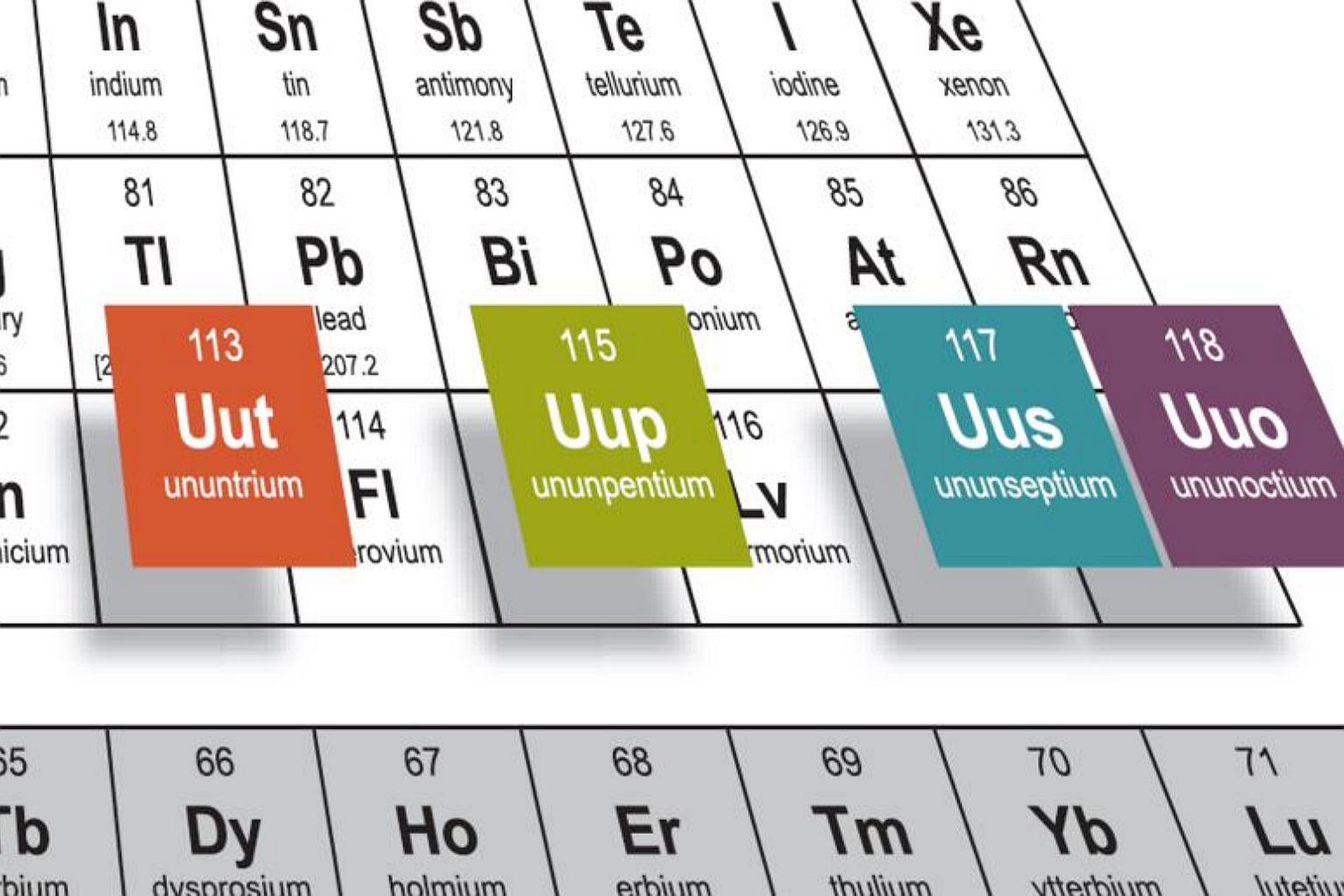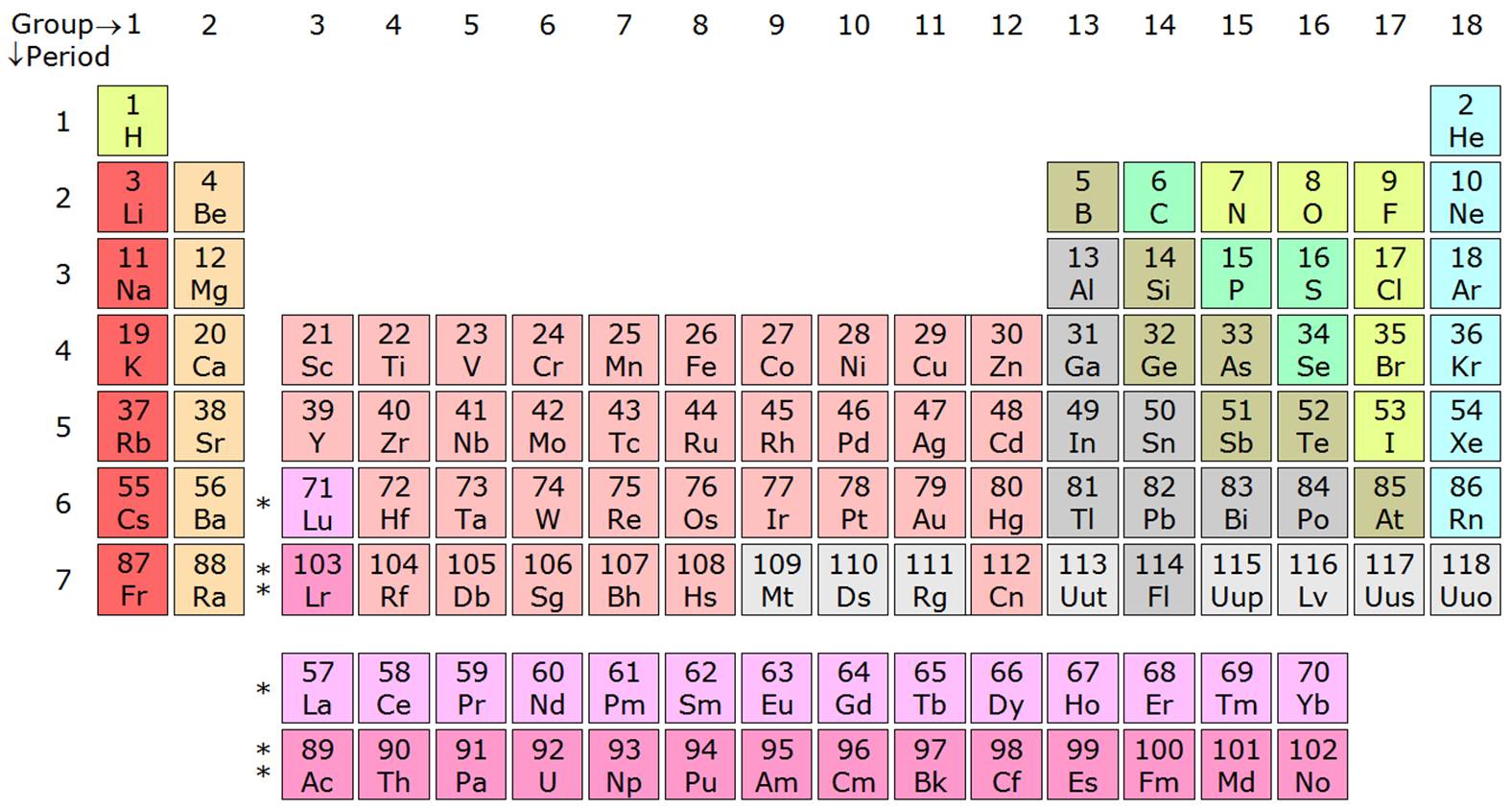Meet the periodic table's 4 new elements: Nihonium, moscouvium, tennessine and oganesson
Sign up now: Get ST's newsletters delivered to your inbox

The four new elements highlighted under their previous working names.
PHOTO: SCREENGRAB FROM IUPAC.ORG
Follow topic:
SINGAPORE - The four new elements announced in December last year have received their new names: Nihonium (Nh), moscouvium (Mc), tennessine (Ts) and oganesson (Og).
The names for the quartet of super-heavy elements, which complete the seventh row of the periodic table, will be on a five-month probation, the International Union of Pure and Applied Chemistry (IUPAC) announced on Wednesday (June 8).
They will undergo a public review - where those interested can provide comments or feedback - before the union approves the names officially.
International Union of Pure and Applied Physics (IUPAP) president Bruce McKellar explained in a media release to The Straits Times that the elements were named after a country, a state, a region and a physicist involved in their discovery.

IUPAP's secretariat office is hosted at the Nanyang Technological University's campus in Singapore.
"This choice of names highlights the international character of work in science, and the importance of key visionary people to progress in our field," Professor McKellar added.
All four are synthetic and were discovered by slamming light nuclei into each other and tracking the decay of radioactive super-heavy elements (which exist only very briefly before decaying into other elements).
Element 113, the first element in the table to be discovered in an Asian country, has been christened nihonium (Nh), which borrows from one of the Japanese names for Japan - nihon.
Nihon means the land of the rising sun.
The element was discovered by Japan's Riken Institute, which houses the Nishina Centre for Accelerator Science.
Element 115 was given the name Moscovium (Mc) after the Moscow region, the location of the Joint Institute for Nuclear Research in Dubna, Russia, while element 117 has been named Tennessine (Ts), to honour the contributions of several institutions in the US state of Tennessee.
Element 118 - Organesson - has been named after the nuclear physicist Yuri Oganessian, who led research into super heavy nuclei and the search for new elements.
While IUPAP said it was unknown if the periodic table has an end and that the full properties of the new elements were yet to be discovered, laboratories are already working to search for the elements to add an eighth row to the table.
It also announced the possible formation of a new Joint Working Party with the IUPAC, which will review claims on the discovery of new elements.

